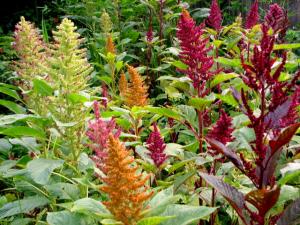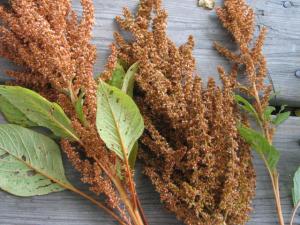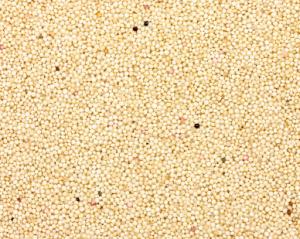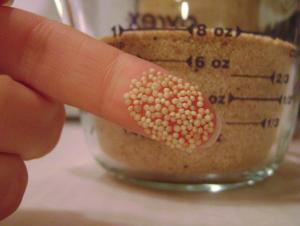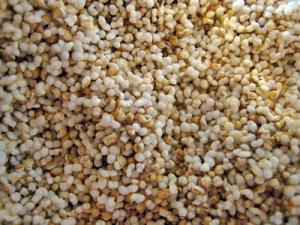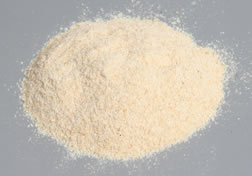Although scores of amaranth varieties exist as decorative plants, seed-bearing crops, and common backyard weeds, this illustrated list will help you identify the whole grain varieties of amaranth via the following photos.
| Amaranth Growing in a Field Amaranth plants in full flower offer up flowers in a vibrant range of reds, oranges, purples, and golds. |
|
| Amaranth Ready for Harvest Orange amaranth flowers that have been harvested and allowed to dry, making it easier to harvest the amaranth grains. |
|
| Amaranth Grains Once harvested, tiny amaranth grains are revealed to be a nearly uniform shade of pale cream. Some grains are occasionally darker, ranging from light brown to nearly black in color, so if you see dark specks in your bulk amaranth don’t worry. It’s just a few grains of a darker shade than normal. |
|
| Amaranth Grains in Detail To show you just how tiny amaranth grains are, the WGC got up close and personal for this photo. Each individual grain is so small, it only covers the space of a few ridges of an average person’s fingerprint, about one millimeter. |
|
| Popped Amaranth Sometimes referred to as puffed amaranth, here’s what happens when you pour a few tablespoons of amaranth grains onto a very hot surface – they pop! They may not be as robust as other popped grains, but what these little puffs lack in size, they more than make up for with enthusiasm and can leap right out of a four-quart sauce pan while popping! |
|
| Amaranth Flour We know, it’s white and powdery… It could be any type of flour! But trust us on this one, it’s amaranth flour. |
Photo credits: Amaranth Growing in a Field and Amaranth Ready for Harvest — courtesy of liseed.org. Popped Amaranth — courtesy of the Flickr photostream of Orphanjones. Amaranth grains and grains in detail – Oldways. Amaranth Flour — courtesy of Parade.com.

